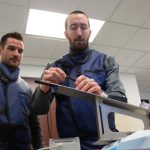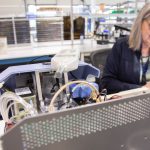Then and Now: How Medical Device Technology Has Changed in the Last Decade
As new technology emerges and existing technologies improve, so too do the devices and medical instruments that use the technology. Integrating evolving medical device technology enables patients, doctors and other healthcare professionals to access enhanced devices and instruments to further improve patient care.
In the last decade, medical device technology has undergone large improvements in all aspects. From the manufacturing of the devices to the treatment and care of patients, medical devices and instruments are becoming more automated, more integrated and more robust in improving patient outcomes.
Artificial Intelligence
Artificial intelligence (AI) in medical device technology has improved the automation and efficiency of device manufacturing, manual processes and more throughout the medical industry. AI has improved medical device technology thanks to its ability to take on menial, redundant tasks. For example, Robotic Process Automation (RPA) can be integrated into pharmaceutical applications. The automation streamlines tasks that are time-consuming and boring, such as prescription validation.
By integrating artificial intelligence into medical device technology, medical practitioners are able to focus on more complex tasks and processes. AI enables manufacturers, developers and medical professionals to more precisely accomplish their duties and can rest assured that their work is accurate and efficient without compromising quality.
3D Printing
While 3D printing has been incorporated into medical device manufacturing and other processes since the 1990s, it has propelled the industry forward significantly in the last decade. 3D printing is a pillar of modern medicine and medical device technology. Engineers, manufacturers and practitioners can use 3D printing to create a number of instruments, including prosthetics and implants.
Modern medicine has launched into efficiency and affordability thanks to 3D printing technology. Device developers integrate 3D printing to create rapid prototypes and to more efficiently mass-produce final products. 3D printing allows engineers and developers to get a device in hand quickly and with a durable, high-quality material. As medical device technology continues to evolve, 3D printing will likely remain at the center of future developments for these reasons.
Internet of Medical Things
Modern technology is synonymous with connectivity and the internet. The medical industry has applied these modern standards of connectivity to coin a phrase known as the Internet of Medical Things (IoMT). Modern medical devices require reliable and secure internet and bluetooth connectivity for effective patient care. Wearable devices, including medicine-delivering implements and remote patient monitoring devices are made viable thanks to reliable connectivity. IoMT technology has allowed these devices to exist on a more reliable and secure scale.
In addition to wearable technology and devices, modern medicine has integrated IoMT into daily patient care. The most prominent example of this can be seen in telehealth appointments, which exploded in popularity and necessity after the COVID-19 pandemic. As patients, providers and developers seek care and medical device technology through a more remote connectivity, the Internet of Medical Things has become essential for bringing patient care to those around the globe.
Not only does IoMT allow patient care and modern medicine to operate on a larger and more remote scale, but it also encapsulates necessary security and privacy. Medical device technology necessitates that patient information and other data is encrypted and secured across devices. Even a decade ago these concerns were much larger than they are today with the advent of a more robust network and seamless integration of wireless internet connectivity. The future of healthcare will rely on IoMT as developers, providers and patients experience a world shifting to virtual connectivity.
Augmented Reality and Virtual Reality
Similar to other technologies, augmented reality and virtual reality have existed for years. Over time, however, the capabilities of these technologies have developed to be incorporated into medical device technology and use.
Augmented reality in the medical industry can be used for patients, doctors and even medical device manufacturers. Because AR is used to show overlays or in-depth renderings of an environment, patients can better describe issues, pain or other needs more accurately. Doctors can more accurately treat their patients or prepare for a surgery. And device manufacturers can integrate AR to inform their prototypes, their production or even simply their proof of concept phases. AR has become increasingly refined and perfected to accurately depict the world and environments and in doing so, lends a hand to medical device technology as engineers and others work to develop and improve patient care.
Virtual reality, on the other hand, has helped put care into more practical uses. Surgeons, for example, can prepare for an operation by virtually performing a surgery or familiarizing themselves with different aspects of an operation. This reduces risk while operating on patients and can improve patient outcomes and care.
The developments and optimization of AR and VR have begun to be incorporated into the medical field to allow practitioners and medical device developers to better understand their patients’ needs and provide solutions. This is a large step forward in providing expert, refined care and creating medical devices that have an impact.
Find the Future of Medical Device Technology
As new technologies become available, many engineers and developers look for ways to incorporate them into manufacturing medical devices. Evolving technology leads to evolving devices and finally, to better patient care. Patients, doctors and end-users directly benefit from improving medical device technology such as AI, 3D printing and VR.
The future of medical device technology is already here, and Nextern is working to bring it to market. Our partners’ medical device projects encompass wide ranges of purposes, goals and technology. From refining an implant to creating a completely new body-worn device, our developers and engineers incorporate leading technology and capabilities into every stage of medical device development.
Find the future of medical device technology with Nextern and see how we can improve patient care together. Contact us and get started on your next medical device project.







